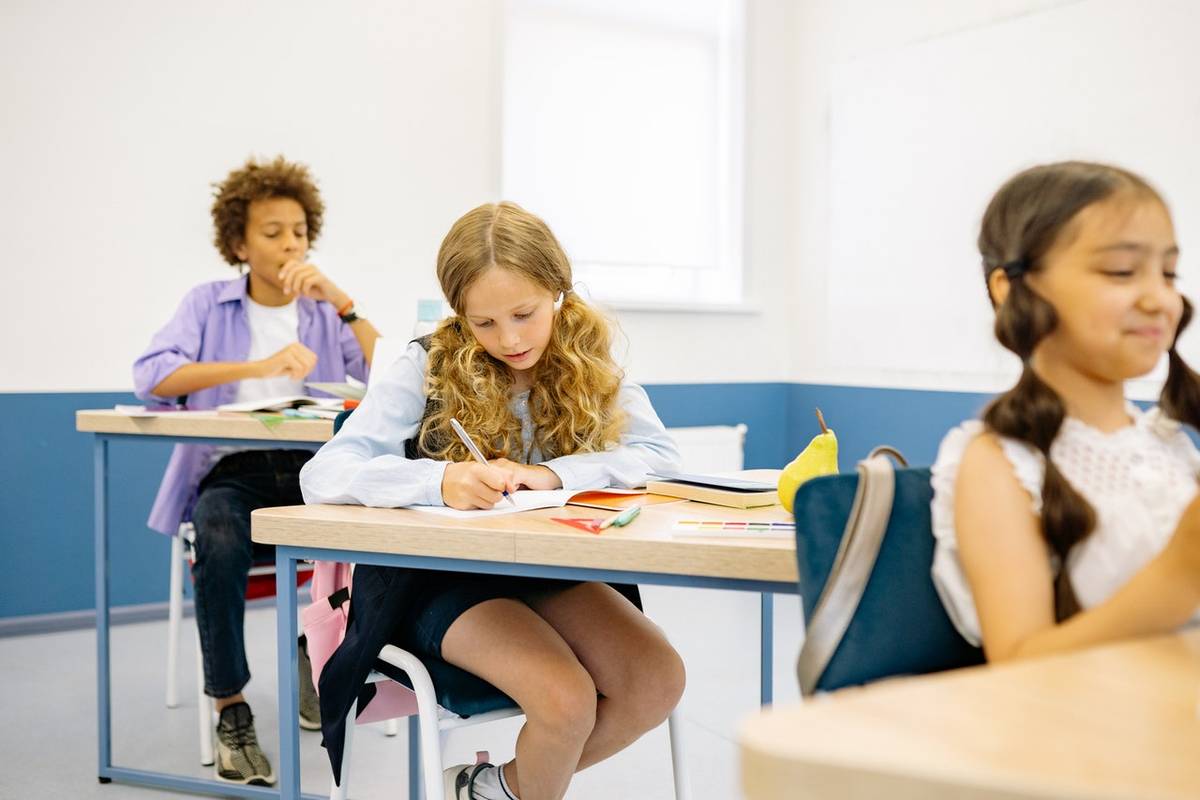Wise teachers understand they’ve signed up for a career full of continuous learning. These educators’ most significant rewards don’t arrive neatly gift-wrapped at the end of the term. Classroom management, robust student success strategy takes years, sometimes decades, to develop.
Teachers encourage students by setting examples. Each teacher’s dedication is evident in how they represent themselves through their teaching method and the classroom environment they create.
First impressions on students are potent tools, and teachers must continually evaluate how much their students accomplish and how they contribute to the student environment and goals. Here are some examples of factors that impact your classroom management and your students’ learning success.
A teacher’s own report card: training
Luckily, the education system abandoned the era of Dickens’ school environment to the pages of classic literature. However, a teacher’s impression on their student is just as long-lasting and enduring.
To teach effectively, a teacher must receive the appropriate accreditation in their chosen subject and upgrade to stay in tandem with the current subject matter, changes in education, and remain relevant as people in their student’s eye.
Teachers and their students benefit from any extracurricular endeavors to upgrade and stay relevant throughout their teaching careers.
Learning environment
Static learning environments can’t foster creativity. While many schools adhere to the old methods of lining up the tables and chairs, it’s proven that it isn’t conducive to an interactive learning environment.
The first negative effect of this setup is that students can’t see their classmates and engage in student sharing. Students seated at the back may not hear the teacher or feel excluded and inferior. On the other side of the spectrum, sitting in the back row may give a student license to waste time instead of paying attention.
Students formed into mini-teams are motivated to build relationships. Benefits of constructing an open environment by building semi-circles focus on human interaction and morale. Student sharing is a powerful building element and, like the domino effect, leads to students building communities.
How you decorate your classroom can have as much impact as how you arrange seating and whiteboards. Children who enter a room filled with high-impact classroom decorations may be more likely to engage and retain that information as they move through the lesson plan.
Communication
Without a doubt, excellent communication skills are the foundation of any successful teacher. This skill isn’t just about talking to your students, whether in college, university, or middle school, for eight hours a day; communication is as much about listening as it is about speaking.
A good teacher ensures every student hears the lesson. Outside environmental distractions, language barriers, educational inequalities, and student capabilities may also alter a student’s ability to learn.
Students are bright and already gifted with the ability to absorb information like proverbial sponges, albeit on their own terms. A teacher contributes by speaking in a clear tone using clear instructions, making eye contact, and evaluating their students’ learning ability, evident in their results.
A student’s failure to achieve good grades may involve a teacher not reaching their student. However, other influencing factors may also contribute.
Student behavior and discipline
Although discipline sometimes receives a negative connotation, it’s a must in a teacher’s toolbox. Discipline manages a teacher’s expectations and forms the boundaries of acceptable student behavior.
Dozens of students share a teachers’ attention, and if a teacher loses control over one, it may lead to circumstances that impact all students, and the academic year suffers.
A teacher should invest in evidence-based behavior management like positive behavior interventions and supports (PBIS) for the singular student and the entire student body.
Coping with special needs
All teachers eventually need to embrace a student who has more significant needs than the rest of the class. A great resource is to include other students in assisting their classmates. Including a student with physical or learning disabilities is a learning opportunity for students and teachers and finding a solution to deal with distractions benefits the whole class.
The classroom beyond walls
A positive environment is a master weapon. Positive doesn’t mean not correcting a child. It means finding the necessary resources and applying them to include all students and making them feel confident about their achievements.
Now more than ever, a teacher must be welcoming, inclusive, and encouraging. Diversity is no longer a catchphrase; it’s a fact. Teachers are confronted with children from every ethnicity, economic background, uncharted home life, and learning challenges, making teaching rewarding and challenging.
Another way to build a positive environment for students is by creating a conducive physical environment.
Not all schools are the same
Not all schools provide the same opportunities. Some schools don’t offer the flexibility of movable tables and chairs, but that doesn’t mean a resourceful teacher can’t explore other options and invite student ownership to problem solve. Students are naturally curious, observant, and eager to assist. Kids feel connected to their school if their teacher asks them to create a fun and bright environment.
A classroom is the teacher’s and student’s home for the duration of an entire school year. While it’s impossible to manipulate the architecture, a teacher can soften the hard lines with color and decor to create a positive environment stimulating learning and creativity.
Create hands-on experiences
A great way to manipulate the physical environment is to include students in the project. Decorating the class environment with students empowers them to build on human interaction, teaches team-building and project management skills, and instills trust and confidence through hands-on experience. Altering the learning environment with a few licks of paint, clever and inspiring posters, and student art fosters creativity and deepens the students’ connection to the space.
Building creative learning stations is an excellent way for younger students to introduce themselves to their classmates in what must be an overwhelming environment. A teacher enhances students’ learning opportunities and problem-solving applications in a more intimate setting by creating learning stations. Learning stations are engaging tools for EAL students but can also apply to other subjects.
Providing students with a clear purpose and guidelines for their assignments is essential. Set a timeline, goals, and include necessary tools that add a fun aspect and functionality. Using tools like markers, stickers, story maps, brainstorming templates, and alternate materials like books and magazines encourages the project’s success.
Final thoughts
Good teachers are vital to the prosperity of a country. These educators take on the role of mentor, referee, cheering squad, delegator, ambassador and diplomat, nurse, and counselor and still find time to foster the individual needs of their students. By promoting a mind that seeks out new methods in themselves, teachers can pass that learning onto their students.




